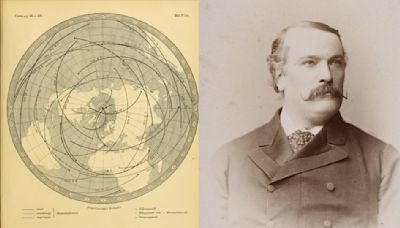Search results
Feb 2, 2022 · Malaria. Malaria is an infectious disease caused by parasites transmitted by mosquito bites. Common symptoms of the disease are fever, tiredness, vomiting, headache and in severe cases, yellow skin, seizures, and death. Cases of malaria were much more prominent in the South in the 18th and 19th centuries with the warmer, wetter climates that ...
An 1802 cartoon of Edward Jenner 's cowpox-derived smallpox vaccine. Diseases and epidemics of the 19th century included long-standing epidemic threats such as smallpox, typhus, yellow fever, and scarlet fever. In addition, cholera emerged as an epidemic threat and spread worldwide in six pandemics in the nineteenth century.
People also ask
What diseases were common in the 19th century?
What were the causes of diseases in the mid-19th century?
Why should we study common diseases in the 19th century?
What were the most common diseases in the 19th century? In the 19th century, several diseases were prevalent and had a significant impact on public health. Some of the most common diseases during this time included: 1. Tuberculosis (TB): TB was a major health concern in the 19th century, causing widespread illness and death. The disease ...
- abscess > An abscess, or a boil, is raised, swollen bump filled with puss. Found on both internal organs and external tissue, abscesses have multiple causes, including viral bacterial infections and as a side effect or symptom of numerous medical conditions.
- apoplexy > Apoplexy is a stroke or brain aneurysm, which results in confusion, unconsciousness, and partial or total paralysis. According to nineteenth-century doctor Egbert Guernsey, the illness was most prevalent in women, older adults, and those with “a stout short body, large and short neck, corpulence, dark, red countenance.”
- atrophy > Atrophy is the degeneration of tissue, muscles, organs, or bones. As a broad category, it can refer to medical conditions as diverse as osteoporosis, heart disease, thyroid disease, or menopause.
- black tongue > Black Tongue, as the name implies, is a dark discoloration of the tongue, often indicative of typhoid or diphtheria. As a highly contagious infection, individuals with “Black Tongue” were regularly quarantined.
Apr 21, 2020 · An 1836 outbreak of typhus in Philadelphia led to important changes in how physicians understood the disease, with important lessons for epidemiology in the age of COVID-19. During the 1800s in ...
Oct 4, 2022 · In the mid-19th century, the causes of plagues and epidemics were still obscure, and miasma (contaminated air) and contagion (disease seeds) were discussed as possible causes of diseases. The German anatomist Jakob Henle (1840) classified the causes of diseases into miasmas, contagions, and miasmatic-contagions [ 22 ].
Apr 8, 2020 · The diseases that were identified and spread included (among others): cholera, tuberculosis, dysentery, malaria, hookworm, influenza, gastrointestinal diseases, measles, yellow fever, mumps, and smallpox. These diseases had existed before the transport changes of the nineteenth century, but they were generally localized and regional.


